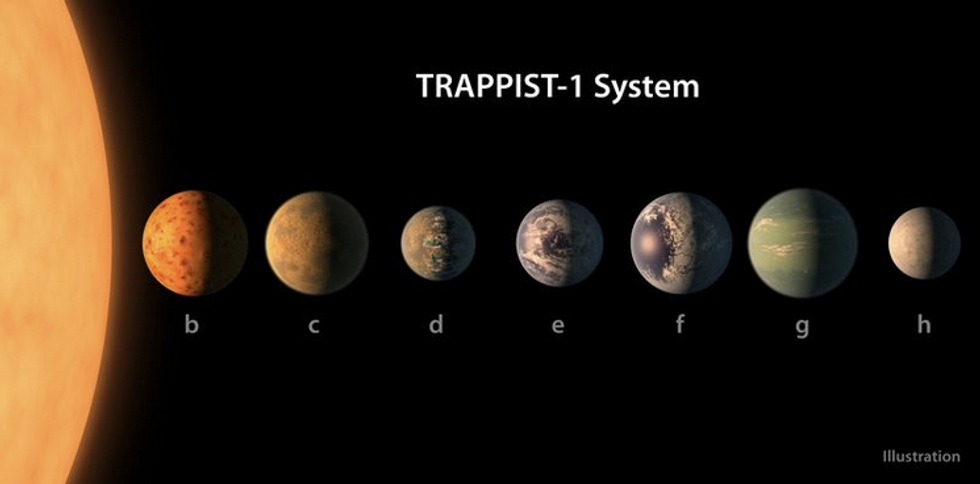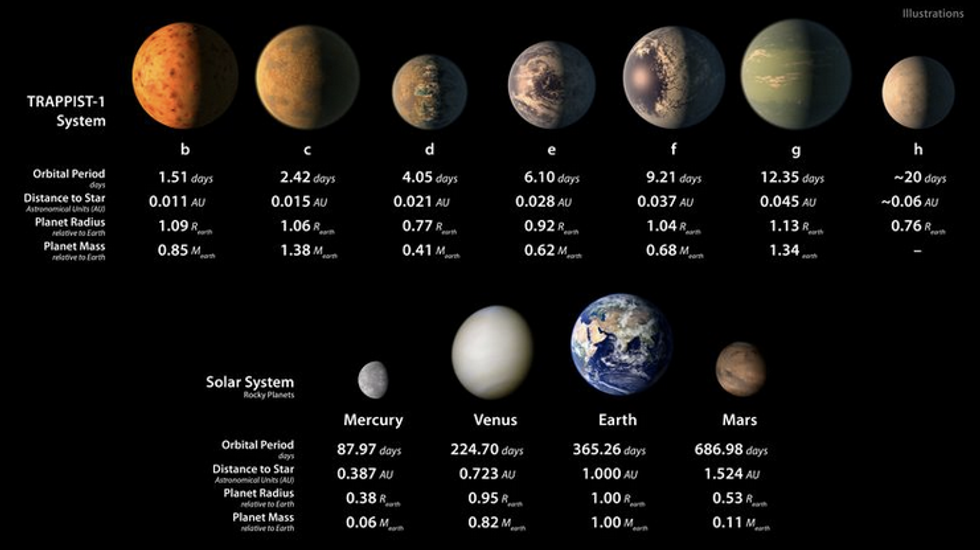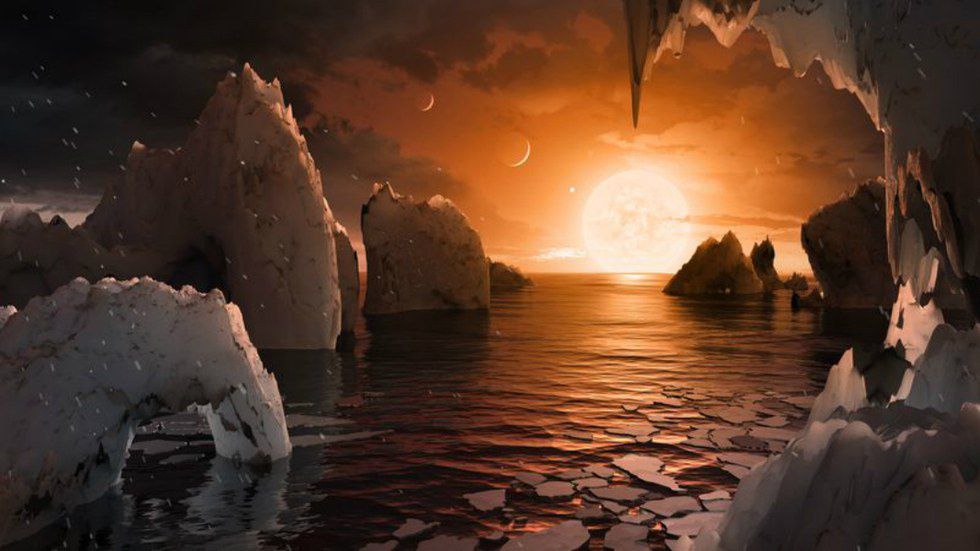About 40 light-years away, seven Earth-sized planets have been spotted orbiting closely around a small, ultra-cool star, Trappist-1. Astronomers are confident they’ll be able to get a more in-depth look at all seven of these planets with future telescopes. Six of the planets may have the right temperatures for liquid water to exist on their surfaces and the researchers think they may be rocky like our own world. Three orbit within the star’s habitable zone, meaning temperatures are just right that there could be whole oceans on the planets’ surfaces. Since that liquid water is so essential for life here on Earth, the astronomers are eager to find it on other worlds outside of our Solar System. The presence of liquid water on another planet could mean that life has thrived there as well, which makes these seven planets now top candidates in the search for alien life.

The astronomers say there’s a good chance they’ll get some answers since they’ll be able to study these exoplanets and their atmospheres in greater detail because these planets orbit around a star that’s much smaller and fainter than our Sun. They found three worlds orbiting Trappist-1 by watching the planets as they passed in front of the star (a process known as transiting). This means whenever a planet moves in front of its host star, it slightly dims the star’s light. The dimming is incredibly small, but with the right instruments, astronomers can sometimes see these light changes from Earth. The astronomers can use the dimming to calculate the size, mass, and orbit of a passing planet.

The closest planet takes just 1.5 Earth days to complete one orbit, while the farthest planet takes around 20 days to circle the star. Because of this, they’re all a super close together. When TRAPPIST-1f and TRAPPIST-1g are at their closest to one another, they’re just at three times the distance between the Earth and the Moon. So if you were to stand on TRAPPIST-1f, sometimes TRAPPIST-1g would look twice as big as the Moon in the sky.




















